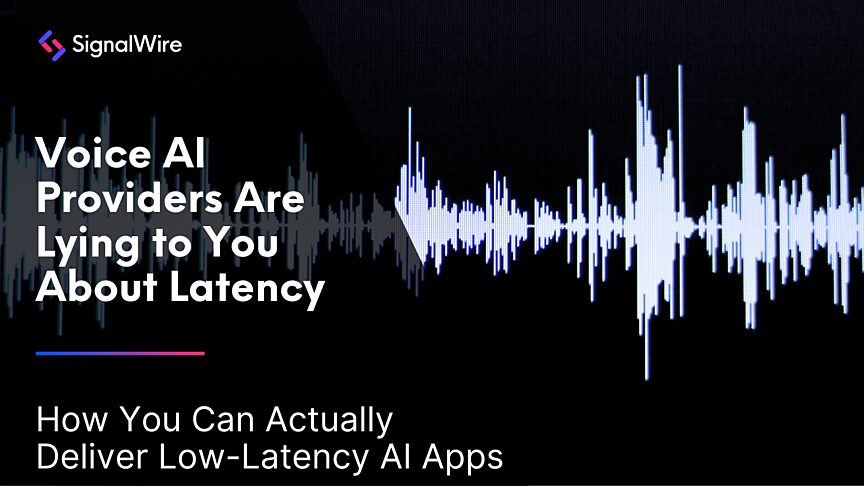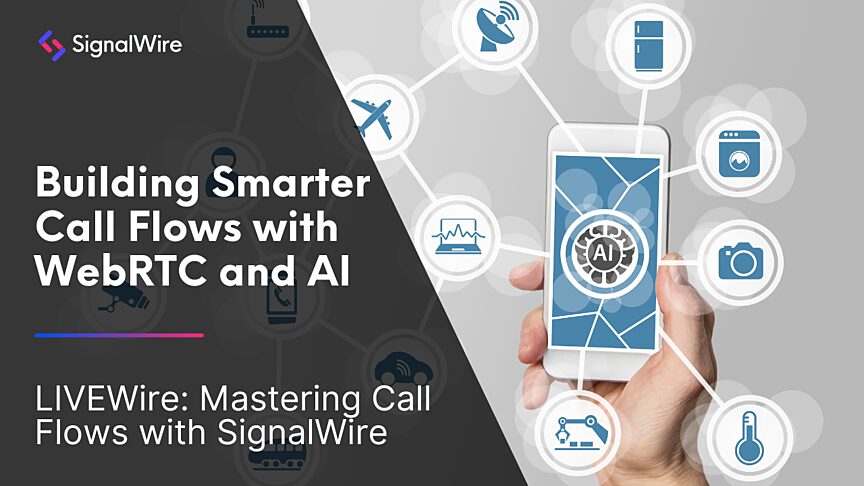The Future of Multi-Modal Communication
We've spent decades perfecting single-channel communication. Voice calls got clearer. Text messages got faster. Video got smoother. Each channel evolved in isolation, optimized for its own strengths.
But here's what we've learned: people don't think in channels.
When you're booking a vacation rental, you want to talk through your needs while seeing the options. When you're troubleshooting with support, you want to explain the problem while sharing a screenshot. When an AI agent helps you navigate complex choices, you want the conversation in your ear and the details in your hand.
The future of communication isn't about better voice or better messaging. It's about voice, messaging, and even video working together, in real time, as a unified experience.
What is multi-modal communication?
Multi-modal communication means using multiple channels simultaneously to create a richer, more natural interaction.
Picture this: You're calling an AI-powered travel assistant to book a vacation rental. As you talk through your preferences ("I need something pet-friendly near the beach, with parking"), the agent doesn't just respond verbally. In real time, it sends you messages with:
Photos of matching properties
Interactive links to availability calendars
Pricing comparisons and booking options
Map locations of each rental
You're talking about what matters to you, while seeing the choices that match. When something catches your eye, you mention it by name. The conversation flows naturally, but the visual context makes decision-making instant.
This isn't video calling. This isn't screen sharing. It's something more elegant: voice for nuance, messaging for precision.
Why multi-modal beats single-channel
Traditional communication forces us into artificial constraints.
Voice alone is powerful for nuance and speed, but it's terrible for sharing complex information. Try reading a confirmation number over the phone. Try describing a visual layout. Try remembering details from a 10-minute conversation.
Messaging alone is great for precision and reference, but it's slow for back-and-forth dialogue. Typing out a complex question takes time. Waiting for responses feels endless. Nuance gets lost in text.
Multi-modal communication plays to each channel's strengths:
Voice handles: Natural dialogue, emotional tone, complex explanations, real-time collaboration
Messaging handles: Visual references, links, documents, persistent records, structured data
When they work together, the whole becomes greater than the sum of its parts.
Real-world use cases
Multi-modal communication isn't hypothetical - it's already transforming how businesses interact with customers.
Customer support that actually helps
A customer calls about a technical issue. While they explain the problem, the agent sends:
A diagnostic link that captures system info automatically
Screenshots highlighting where to click
A follow-up article for future reference
The conversation stays fluid, but the customer walks away with everything they need, no frantic note-taking required.
Healthcare without friction
A telehealth consultation combines voice for discussing symptoms with messaging for:
Sending prescription details to the pharmacy
Sharing care instructions and medication schedules
Providing appointment reminders and follow-up forms
The doctor focuses on the patient, while the information flows seamlessly into the right places.
Retail and delivery services
A customer asks about an order. The AI agent discusses the issue while messaging:
Live tracking links
Photos of the package at each checkpoint
Updated delivery windows
Return labels if needed
The conversation feels personal, but the data is precise.
Financial services
A client discusses investment options with an advisor. As they talk through strategies, the advisor shares:
Live portfolio dashboards
Interactive scenario models
Secure document signing links
Regulatory disclosures
Trust is built through voice. Decisions are made with visual clarity.
The technical challenge: Making it seamless
Building multi-modal experiences requires more than connecting two channels. It requires orchestration.
When a voice call and a messaging session operate in parallel, they must:
Maintain context: Every message sent needs to match the moment in the conversation
Handle timing: Visual information arrives when it's relevant, not too early or too late
Preserve identity: Both channels must know they're part of the same interaction
Support handoff: Users should seamlessly move between voice and text as needed
Work across networks: Whether it's PSTN, SIP, or app-based calling, the experience stays consistent
How does SignalWire solve this?
SignalWire’s Programmable Unified Communications (PUC) APIs allow developers to:
Initiate voice and messaging sessions from the same trigger
Share state and context between channels in real time
Route intelligently based on user preference and channel availability
Maintain security and compliance across both voice and messaging
SignalWire AI voice agents: The perfect multi-modal partner
The rise of conversational AI has made multi-modal communication not just useful, but essential.
AI agents excel at voice interaction. They understand natural language, respond instantly, and handle complex dialogue. But they also have something humans don't: the ability to generate, format, and send structured information in parallel without breaking stride.
An AI booking agent can:
Listen to your vacation preferences
Query availability in real time
Format and send visual options as you talk
Adjust recommendations based on your verbal reactions
Complete the transaction with confirmation details sent via message
All of this happens in the span of a single conversation. No app switching. No "let me send you a link." Just fluid, natural communication that respects how humans actually make decisions.
The evolution of Bring Your Own Carrier (BYOC)
Enterprise customers increasingly want to bring their own carriers while adding programmable intelligence on top. Multi-modal communication makes this even more powerful.
With SignalWire BYOC, businesses can:
Use their existing phone numbers and carrier relationships for voice
Layer SignalWire's APIs for messaging, AI, and orchestration
Maintain compliance and quality standards across both channels
Gain unified analytics on how customers use voice vs. messaging
The result is flexibility without fragmentation: voice and messaging working together, even when they're coming from different infrastructure.
What comes next for multi-modal communication
Multi-modal communication is still in its early days, but the direction is clear.
We're moving toward a world where:
Every voice call can seamlessly include visual context
AI agents become true collaborators, talking and showing simultaneously
Businesses deliver richer experiences without asking customers to switch apps
Communication adapts in real time to what each moment requires
The networks are ready. The APIs exist. The use cases are proven.
What's needed now is a shift in thinking: from optimizing individual channels to orchestrating unified experiences.
Conclusion: Beyond the single channel
For too long, we've treated voice and messaging as separate tools. But people don't communicate that way. They blend channels naturally, using voice when it feels right and visual cues when they need precision.
At SignalWire, we're building the infrastructure to make multi-modal communication not just possible, but effortless. Whether you're powering AI agents, customer support, or enterprise workflows, the future isn't choosing between voice and messaging.
It's using both, together, exactly when they're needed.
Because the best communication isn't about the channel. It's about the connection.
Learn more and start building for free
Sign up for SignalWire today and receive free credits to start your next project. Build a proof of concept in a couple hours that you can launch into production. Our developer tool kit, developer documentation with code snippets, customer support to real humans, and enthusiastic community support in Discord help you build faster.


